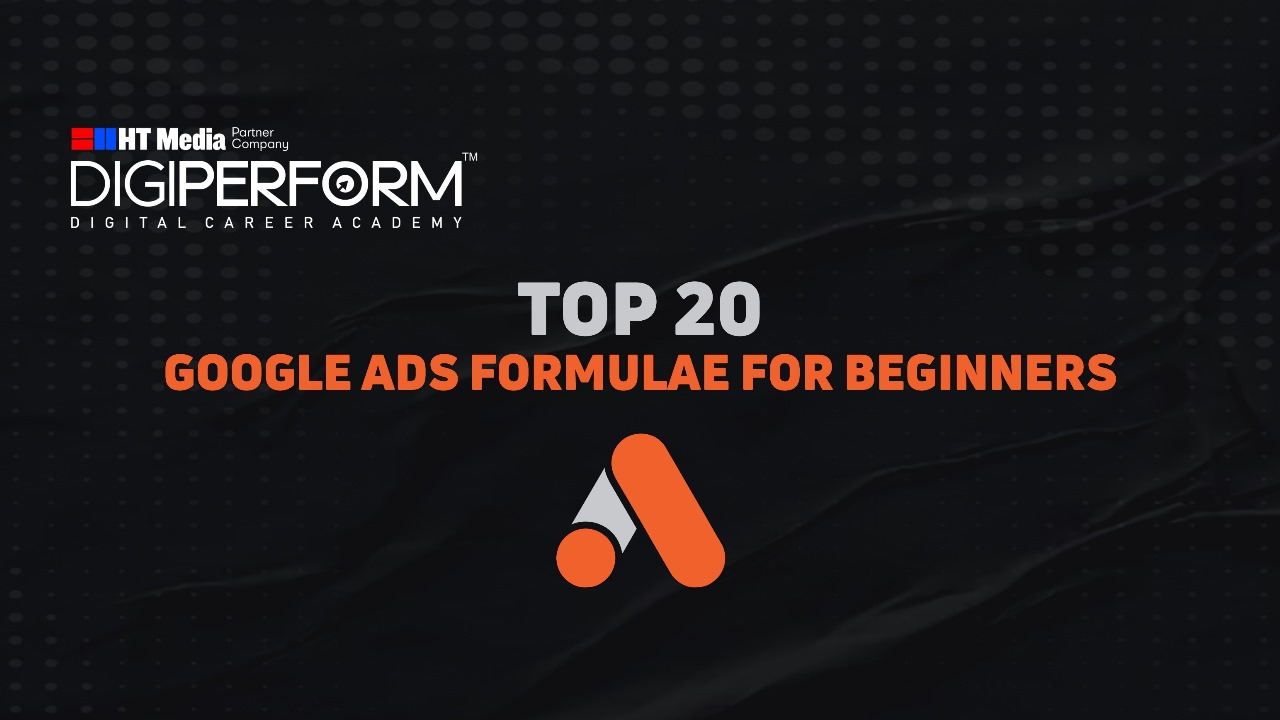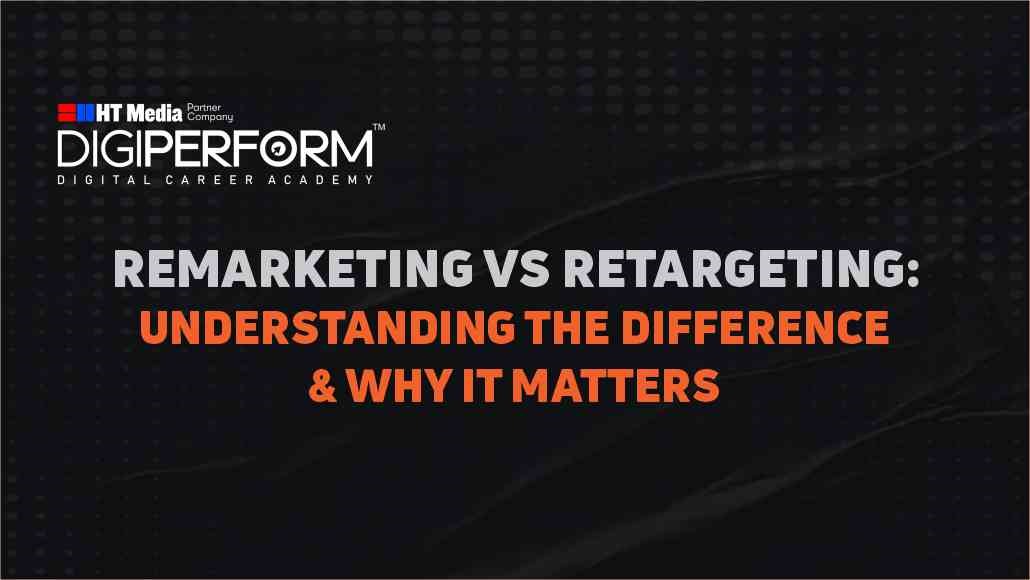Top 20 Google Ads Formulae for Beginners
For learning about digital marketing, understanding Google Ads Formulae means gaining insight into how businesses use data, targeting, and creative strategies to achieve measurable results.
Google Ads is one of the most powerful tools for businesses and individuals looking to build an online presence, drive traffic, and generate leads. For you, understanding the basics and strategies of Google Ads can open up significant career opportunities in digital marketing, advertising, and e-commerce.
The world is increasingly going digital, and being proficient in tools like Google Ads can make you a valuable asset in any industry.
Google Ads is an online advertising platform developed by Google, where advertisers pay to display their ads on Google’s search engine results pages (SERPs), YouTube, and other partner websites.
The platform operates on a pay-per-click (PPC) model, meaning advertisers only pay when someone clicks on their ad. This approach ensures that you’re paying for actual results rather than impressions or views that might not lead to engagement.
For learning about digital marketing, understanding Google Ads means gaining insight into how businesses use data, targeting, and creative strategies to achieve measurable results.
Why Do You Need Google Ads Formulae?

Creating effective campaigns on Google Ads requires more than just creativity—it demands strategy and an analytical mindset. Google Ads Formulae like CTR (Click-Through Rate), ROI (Return on Investment), and CPA (Cost Per Acquisition) help advertisers measure success and make data-driven decisions.
These formulae serve as essential tools to understand campaign performance and optimize for better outcomes.
Let’s explore why these google ads formulae are critical:
- Clarity in Performance Metrics: Formulae provide clear metrics to gauge the success of campaigns. Without them, it would be challenging to determine whether your ads are meeting objectives.
- Data-Driven Decision Making: Marketing is no longer about guesswork. By using these google ads formulae, you can learn how to interpret data and adjust campaigns to maximize effectiveness.
- Real-World Applications: Many businesses rely on Google Ads to drive growth. Understanding the google ads formulae behind this tool prepares you for real-world job roles in marketing, advertising, and beyond.
- Budget Management Skills: Learning how to calculate metrics like CPA and ROI teaches you the importance of managing resources effectively, a skill that is valuable in any career.
Google Ads is more than just a marketing tool; it’s a gateway to understanding how digital businesses operate. Whether you aim to become a digital marketer, run your own online business, or simply want to explore the analytics side of marketing, mastering Google Ads can be a game-changer.
The google ads formulae used aren’t just about running successful campaigns; they’re about understanding the mechanics of marketing. For instance:
- CTR (Click-Through Rate) teaches you how well your ad resonates with the audience.
- CPC (Cost Per Click) helps you understand the cost-efficiency of your campaigns.
- ROI (Return on Investment) demonstrates whether your ad spend is generating profit.
By learning and applying these google ads formulae, you can build a solid foundation in digital marketing. These concepts aren’t just theoretical; they have practical applications that can lead to internships, freelancing opportunities, and even full-time jobs in the field.
Google Ads is a powerful tool for driving traffic, generating leads, and boosting sales. However, creating effective campaigns requires understanding some key strategies and google ads formulae that can maximize your return on investment (ROI).
Here are the top 20 Google Ads formulae to ensure your campaigns deliver exceptional results:
1. Ad Rank Formula
Ad Rank = Quality Score × Maximum CPC Bid
Your ad’s position is determined by its Ad Rank. Focus on improving your Quality Score and bidding strategically to achieve better placements.
2. CTR (Click-Through Rate)
CTR = (Clicks / Impressions) × 100
A high CTR indicates that your ad is relevant to users. Optimize your headlines and descriptions to improve this metric.
3. Quality Score Components
Quality Score is influenced by:
- Expected CTR
- Ad relevance
- Landing page experience Improving these elements ensures better ad performance and lower costs.
4. CPC (Cost-Per-Click)
CPC = (Ad Rank of the Advertiser Below / Your Quality Score) + $0.01
Keep Quality Scores high to minimize your CPC.
5. Conversion Rate
Conversion Rate = (Conversions / Clicks) × 100
Monitor this to understand how effectively your ads are turning clicks into actions. Test and optimize landing pages for better results.
6. Impression Share
Impression Share = (Impressions / Total Eligible Impressions) × 100
This metric shows the percentage of times your ad appears compared to its potential reach. Increase your budget or improve targeting to capture more share.
7. ROAS (Return on Ad Spend)
ROAS = (Revenue from Ads / Ad Spend) × 100
Track ROAS to measure the profitability of your campaigns. Aim for higher ROAS through better targeting and ad optimization.
8. CPA (Cost Per Acquisition)
CPA = Total Cost / Conversions
Lowering your CPA ensures cost-efficient campaigns. Adjust bids and audiences for better outcomes.
9. CPM (Cost Per Thousand Impressions)
CPM = (Total Ad Spend / Impressions) × 1,000
This metric is crucial for brand awareness campaigns. Optimize ad visuals and messaging to maximize impressions.
10. Earnings Per Click (EPC)
EPC = Total Revenue / Total Clicks
EPC helps gauge the profitability of your clicks. High EPC often correlates with well-targeted ads.
11. View-Through Conversions
View-Through Conversion Rate = (View-Through Conversions / Impressions) × 100
Tracks conversions that occur after users view, but don’t click, your ad. Use this to evaluate the indirect impact of display ads.
12. Bounce Rate
Bounce Rate = (Single Page Sessions / Total Sessions) × 100
High bounce rates on landing pages can harm performance. Ensure your page matches the ad’s intent and provides clear next steps.
13. Average Position
Average Position = Total Ad Position Score / Number of Impressions
This metric indicates where your ad appears on the SERP. While less prominent now, it’s still useful for historical performance insights.
14. Bid Adjustment
Bid Adjustment = Current Bid × (1 + Adjustment Percentage)
Adjust bids based on:
- Device performance
- Location
- Time of day Strategic bid adjustments can improve campaign efficiency.
15. Budget Allocation Formula
Allocated Budget = Total Budget × (Campaign ROI / Total ROI)
Allocate budgets based on:
- ROI potential
- Campaign objectives
- Audience size Effective budgeting ensures optimal resource utilization.
16. Maximize Clicks
Maximized Clicks = Budget / CPC
This bidding strategy focuses on generating the most clicks within your budget. Ideal for traffic-focused campaigns.
17. Target CPA Bidding
Target CPA = Total Cost / Desired Conversions
Set a target cost per acquisition to automate bidding while maintaining cost efficiency.
18. Target ROAS Bidding
Target ROAS = Total Revenue Goal / Total Ad Spend Goal
Automate bids to achieve a specific ROAS. Works well for e-commerce and revenue-driven campaigns.
19. Audience Segmentation
Segment Size = Total Audience × (Segment Percentage)
Break down audiences into segments (e.g., demographics, interests, behaviors) for tailored ad messaging.
20. A/B Testing
A/B Testing Conversion Rate Lift = (Variation Conversion Rate – Control Conversion Rate) / Control Conversion Rate × 100
Continuously test ad elements (e.g., headlines, CTAs, visuals) to identify what resonates most with your audience.
Final Thought
Mastering these google ads formulae will help you create high-performing Google Ads campaigns. By focusing on metrics like Quality Score, CTR, and ROAS, you can fine-tune your strategy for maximum impact. Remember, continuous optimization is key to staying ahead in the competitive world of online advertising.
Google Ads is an indispensable tool in the digital age. Mastering strategies and google ads formulae can provide a competitive edge in the job market and valuable skills foray, and pave the way for a future-ready skill set!
FAQs for Google Ads Formulae
2.How do I improve my ad placement using Ad Rank?
Focus on enhancing your Quality Score and manage your bids strategically to improve your Ad Rank and achieve better ad placements.
3.What factors influence Quality Score?
Expected CTR, ad relevance, and landing page experience all affect the Quality Score. Improving these elements will enhance ad performance.
4.Why is ROI important in Google Ads campaigns?
ROI helps assess whether your ad spend is generating a profit, allowing you to optimize your budget allocation effectively.
5. What’s the benefit of tracking conversion rates in my campaigns?
Tracking conversion rates helps you understand how well your ads are turning clicks into valuable actions, enabling you to optimize accordingly.
6.How can I achieve a high ROAS (Return on Ad Spend)?
To achieve a high ROAS, focus on better targeting, ad optimization, and refining your bidding strategy to increase profitability.
7.What does impression share tell me about my campaign?
Impression share indicates the percentage of eligible impressions your ad is receiving. A higher share means your ad is visible more often.
8.How should my Google Ads budget be distributed?
Budget allocation should be based on the ROI potential of each campaign. Focus on campaigns with higher return potential and larger audience reach.
9.What distinguishes Target ROAS bidding methods from Target CPA bidding strategies?
Target CPA focuses on reducing cost per conversion, while Target ROAS aims to achieve a specific return on ad spend for revenue-driven goals.
10.How does A/B Testing help optimize my campaigns?
A/B Testing helps identify which ad variations (headlines, visuals, CTAs) perform best, allowing you to fine-tune your campaigns for better results.
11.What is the role of bid adjustments in optimizing campaigns?
Bid adjustments allow you to modify your bids based on factors like location, time of day, or device, improving ad performance and efficiency.
12.How do I optimize my landing page for better performance?
Ensure your landing page matches the ad’s messaging, loads quickly, and provides clear next steps to reduce bounce rates and improve conversions







